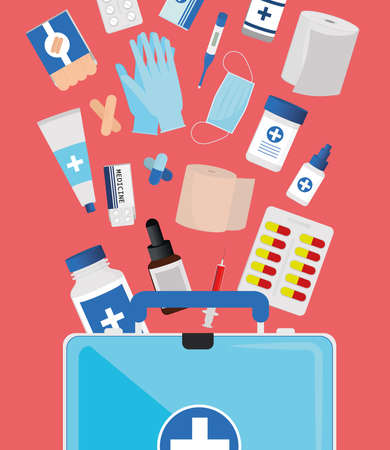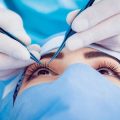What Is CoolSculpting?
If you’ve ever struggled with stubborn fat that just won’t budge, no matter how much you hit the gym or watch your diet, you’re definitely not alone. That’s exactly why CoolSculpting has exploded in popularity across the U.S. over the last decade. But what exactly is this buzzworthy treatment? CoolSculpting, also known as cryolipolysis, is a non-surgical cosmetic procedure designed to freeze and eliminate fat cells in targeted areas of your body—think love handles, belly pooches, or even that annoying double chin. The science behind it is actually pretty wild: controlled cooling technology targets fat beneath the skin without damaging surrounding tissue. Over time, your body naturally processes and removes these frozen fat cells for good. For a lot of Americans looking for a way to tackle those problem spots without surgery or downtime, CoolSculpting has become the go-to solution. But as with any trending treatment, it’s important to really understand what you’re signing up for—and whether it’s as safe as it sounds.
2. Is CoolSculpting FDA-Approved?
If you’re considering CoolSculpting, one of the first things you probably want to know is whether it’s actually cleared by the authorities here in the States. That’s a smart question—no one wants to mess around with unproven treatments, especially when your health is on the line. So, let’s break down where CoolSculpting stands with the U.S. Food and Drug Administration (FDA) and what that really means for anyone thinking about freezing their fat away.
FDA Approval: What’s the Real Deal?
CoolSculpting isn’t just some fly-by-night fad; it’s a procedure that’s been officially cleared by the FDA since 2010 for non-invasive fat reduction in specific areas of the body. That means it met certain safety and efficacy benchmarks before hitting the market here. The FDA doesn’t just hand out approvals to anything—they put these treatments through rigorous testing to make sure they do what they claim without posing unreasonable risks.
What Does FDA Clearance Mean?
It’s important to note that CoolSculpting has FDA clearance rather than full approval, which is common for many medical devices. Clearance means the device was shown to be “substantially equivalent” to another legally marketed device in terms of safety and effectiveness. For consumers, this translates to a certain level of confidence that CoolSculpting works as intended when performed correctly.
FDA-Approved Treatment Areas
| Treatment Area | Year Cleared | Main Purpose |
|---|---|---|
| Abdomen | 2010 | Fat reduction |
| Flanks (love handles) | 2010 | Fat reduction |
| Thighs (inner/outer) | 2014 | Fat reduction |
| Submental area (under chin) | 2015 | Double chin treatment |
| Bra fat, back fat, upper arms | 2016-2017 | Fat reduction in specific areas |
The Standards CoolSculpting Had to Meet
The FDA required clinical studies showing that CoolSculpting could safely reduce fat in targeted areas without causing significant harm or side effects beyond what’s expected for non-invasive procedures. They also looked at data on long-term results and monitored reported complications. So while no cosmetic treatment is 100% risk-free, having FDA clearance puts CoolSculpting ahead of many other fat-loss fads you’ll see advertised online.
![]()
3. Common Side Effects You Might Experience
If you’re considering CoolSculpting, it’s smart to know what you might feel right after your appointment and in the days that follow. Based on both clinical research and stories from real patients across the U.S., here’s a rundown of the most common immediate and short-term side effects guys (and women) have reported.
Redness, Swelling, and Bruising
Right after a CoolSculpting session, it’s totally normal for the treated area to look red or even feel a bit swollen. Some folks also notice mild bruising. These reactions are usually temporary and clear up within a few days to two weeks. They’re basically your body’s way of responding to the cold exposure and suction during treatment.
Numbness and Tingling
A lot of people talk about numbness in the targeted spot—it can last anywhere from a few hours to several weeks. Tingling or a “pins and needles” sensation is pretty common too. While it can feel weird, these side effects typically fade as your nerves recover from the cooling process.
Soreness or Tenderness
Think of it like hitting the gym hard: some soreness or tenderness is expected. The treated area may be sensitive to touch or even ache a little, similar to post-workout muscle fatigue. This discomfort is generally mild and goes away without needing any special care.
Itching and Skin Sensitivity
A handful of people in clinical studies—and plenty of U.S. patient reviews—mention itching or heightened sensitivity in the days after their session. It’s not universal, but if it happens, it tends to resolve quickly as your skin returns to normal.
When Should You Worry?
Most side effects are minor and manageable at home. However, if you experience severe pain, blistering, or unusual changes in skin color, reach out to your provider just to be safe. For most Americans who try CoolSculpting, these immediate reactions are mild and part of the process.
4. Rare but Serious Risks
While most guys who try CoolSculpting walk away with minimal side effects, it’s important to be aware of the rare but potentially serious complications that can occur. The big one you might hear about is called paradoxical adipose hyperplasia (PAH). Basically, instead of shrinking, the fat in the treated area actually gets bigger and harder—a pretty unexpected result when you’re aiming for a slimmer look.
Here’s a quick breakdown of some rare but noteworthy risks:
| Complication | What Happens | How Common? | What Guys Should Know |
|---|---|---|---|
| Paradoxical Adipose Hyperplasia (PAH) | Fat cells expand rather than shrink; creates a firm, enlarged bulge | About 1 in 4,000 treatments | Usually needs surgical correction; more common in men than women |
| Nerve Pain or Numbness | Tingling, numbness, or pain lasting weeks or months | Uncommon | Mostly temporary but can be annoying or distracting for active guys |
| Skin Changes | Bruising, discoloration, or texture changes in treated area | Rare | Generally fades over time, but not always right away |
| Tissue Damage/Frostbite | Extreme cold can rarely cause skin injury or blisters | Very rare | Mainly happens if device isn’t used correctly; pick experienced providers only |
If you’re considering CoolSculpting, it’s smart to ask your provider about these risks and how they handle complications. Most reputable clinics will screen for risk factors and talk you through what to watch out for. At the end of the day, while CoolSculpting is generally safe, knowing the full picture—especially as a guy—is key before you sign up.
5. Who Should and Shouldnt Consider CoolSculpting
If you’re thinking about CoolSculpting, it’s important to know whether you actually fit the bill for this treatment. Based on what I’ve learned from U.S. clinics and medical pros, CoolSculpting is best suited for adults who are already close to their ideal body weight but struggle with stubborn pockets of fat that just won’t budge—think love handles or a little extra under the chin. It’s not a weight-loss solution, and if you’re hoping to drop a significant amount of pounds, your doctor will probably tell you to look at other options first.
Who makes a good candidate? Generally, you should be healthy overall, have realistic expectations, and want to target specific areas rather than slim down all over. If you’re active, eat well, and just can’t seem to lose that last bit of fat despite your efforts, CoolSculpting could be worth considering. It’s also great if you don’t want surgery or much downtime—something a lot of guys I know appreciate because we want results without missing work or workouts.
Who should steer clear? On the flip side, there are some people who shouldn’t go near CoolSculpting. If you have conditions like cryoglobulinemia, cold agglutinin disease, or paroxysmal cold hemoglobinuria (these are rare disorders where exposure to cold can cause serious health issues), you’ll definitely want to skip it. Pregnant women or those trying to become pregnant are usually advised against it as well. Also, if you have loose skin rather than firm fat or poor skin tone in the area you want treated, CoolSculpting might not give you the outcome you want.
Finally, if you expect dramatic changes overnight, this isn’t for you. Results take time—usually weeks or months—and even then, they’re subtle compared to surgical lipo. As with any cosmetic procedure in the U.S., your doctor will want to review your health history and goals to make sure it’s safe and effective for your unique situation.
6. What Real Guys Say About CoolSculpting
If you’re like me, you probably want to know what other guys have actually experienced before making a decision about CoolSculpting. Hearing from real men who’ve gone through the procedure can give you a better sense of what to expect—especially when it comes to safety, side effects, and what they wish they’d known beforehand.
Anecdotes From American Men
Mike, a 38-year-old from Texas, shared that he was initially drawn in by the promise of “no downtime.” He said, “I thought I’d be back at the gym the next day, but honestly, I was sore for almost a week. It felt like I had done way too many sit-ups.” Mike also mentioned some numbness that lingered for several weeks, something he hadn’t expected based on the ads he saw.
Jason from California tried CoolSculpting on his love handles. “The first session was pretty easy, but about three days later, I got this weird tingling and stinging feeling. My doc told me it was normal, but I wish I’d known how long the swelling would last—it took nearly a month to look normal again,” he explained.
What They Wish They Knew
- Pain and Discomfort: Several guys reported that while the procedure itself wasn’t painful, the aftereffects were more uncomfortable than they expected. Soreness and sensitivity were common themes.
- Numbness Lasts: A lot of men didn’t realize that numbness could stick around for weeks or even months in some cases. It’s not always mentioned in the quick sales pitch.
- Results Take Time: Many wished they knew results aren’t immediate—most had to wait two or three months before seeing any noticeable difference.
The Bottom Line From Real Experiences
The general feedback is that while CoolSculpting is generally safe when performed by trained professionals, it’s not totally risk-free or as hassle-free as some clinics make it sound. Most men agreed that doing your homework—and being prepared for some downtime and temporary discomfort—makes all the difference in managing expectations and recovery.
7. Talking to Your Doctor: Questions to Ask Before Booking
If you’re seriously considering CoolSculpting, having a real, open conversation with your provider is crucial—not just for your peace of mind but to make sure the treatment is safe and actually right for you. Here’s how I approached my own consultation, and the key questions I’d recommend asking before you book anything.
Be Honest About Your Health History
Start by laying all your cards on the table. Tell your doctor about any medical conditions you have, medications you’re taking, allergies, or past procedures. Some health issues—like cryoglobulinemia or paroxysmal cold hemoglobinuria—are absolute deal breakers for CoolSculpting. Don’t hold back, even if it feels awkward.
Ask About Credentials and Experience
I made sure my provider was certified and had plenty of hands-on experience with CoolSculpting. It’s totally fair (and smart) to ask: “How many treatments have you performed?” and “Have you treated patients with my body type before?” You want someone who knows exactly what they’re doing.
Discuss Risks and Side Effects
This is non-negotiable. Get clear answers about possible side effects, both common (swelling, bruising, numbness) and rare ones like paradoxical adipose hyperplasia (PAH). Ask: “What should I expect during recovery?” and “How often do complications happen in your practice?” If they dodge these questions, that’s a red flag.
Talk Results—Not Just Promises
Be realistic about what CoolSculpting can achieve. Ask to see before-and-after photos of real patients who look like you. Push for details: “How many sessions will I need?” and “When will I see results?” Make sure their expectations line up with yours.
Clarify Costs and Commitments
No one likes surprise bills. Ask upfront about the full cost—including touch-up sessions—and what happens if you’re not satisfied with the outcome. Many providers offer payment plans, so it’s worth discussing options if price is a concern.
Get Emergency Info
It might feel paranoid, but ask: “What should I do if I notice something unusual after treatment?” A reputable clinic will walk you through their protocol for addressing any complications fast.
Bottom line? The more direct and detailed your conversation, the better equipped youll be to decide if CoolSculpting is truly safe and worthwhile for you. Don’t settle for vague answers—your safety (and satisfaction) should always come first.


